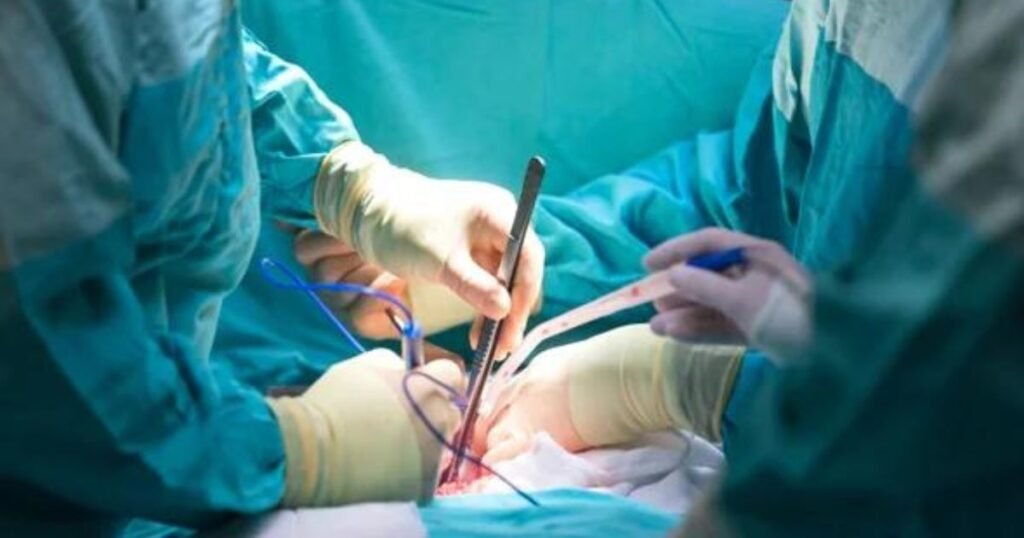Organ transplantation is a medical procedure that involves the removal of an organ from one individual and its placement into the body of a recipient, replacing a damaged or missing organ. This life-saving procedure offers hope to individuals suffering from organ failure and significantly improves their quality of life. In this article, we will explore the different aspects of organ transplantation, including types of transplants, organs and tissues involved, donor options, bioethical considerations, the importance of both deceased and living donations, the transplantation process, and the impact on quality of life.
Introduction to Organ Transplantation
Organ transplantation is a complex medical procedure aimed at addressing organ failure or damage in individuals. It involves the transfer of organs from a donor to a recipient, either at the same location or through transportation to another site. The transplanted organs can be either autografts, which are organs and tissues transplanted within the same person’s body, or allografts, which are transplants between two individuals of the same species. Allografts can come from living or deceased donors.

Types of Transplants
Organ transplantation encompasses various types of transplants. Autografts refer to the transplantation of organs or tissues within the same person’s body. Examples of autografts include skin grafts used in reconstructive surgery. On the other hand, allografts involve transplants between two individuals of the same species. Allografts can be obtained from living donors, such as a kidney transplant between siblings, or from deceased donors through organ donation.
Read More: Neuroscience
Organs and Tissues for Transplantation
Organ transplantation has made significant advancements, allowing for the successful transplantation of various organs and tissues. Organs that have been successfully transplanted include the heart, kidneys, liver, lungs, pancreas, intestine, thymus, and uterus. Additionally, tissues such as musculoskeletal grafts (bones and tendons), corneae, skin, heart valves, nerves, and veins can also be transplanted.
Among these transplants, kidneys are the most commonly transplanted organs worldwide, followed by the liver and then the heart. Corneae and musculoskeletal grafts are the most commonly transplanted tissues, outnumbering organ transplants by more than tenfold.
Table of Contents
Donor Options
Organ donors can be classified as living, brain dead, or deceased via circulatory death. Living donors are individuals who willingly donate organs while alive, such as donating a kidney to a family member. Brain dead donors have suffered severe brain injury, and their organs can be recovered for transplantation. Deceased donors who die via circulatory death can also be potential donors, with tissue recovery possible up to 24 hours after the cessation of heartbeat.
Most tissues, except for corneas, can be preserved and stored for up to five years, enabling them to be “banked” for future transplantation needs.

Bioethical Issues in Transplantation
Organ transplantation raises important bioethical considerations. One of the key issues is the definition of death. Determining the point at which an individual can be considered deceased is crucial for organ procurement and transplantation. Additionally, obtaining consent for organ donation, both from living and deceased donors, requires careful consideration and ethical guidelines.
Importance of Deceased and Living Donations
Both deceased and living donations play a vital role in meeting the demand for organ transplantation. Deceased donations offer the potential to maximize the therapeutic potential of organs, allowing for wider access to transplantation. Living donations, although involving certain risks for the donor, are necessary for specific types of transplants or to compensate for the limited supply of organs from deceased donors. Education and awareness about organ donation among communities and health professionals are crucial for the success of transplantation programs.
Education and Oversight
Effective oversight and control by health authorities are essential in organ transplantation. Strict measures should be in place to protect both recipients and donors, ensuring optimal care and safety. Transparent oversight of donation and transplantation activities fosters public trust in the system. Educating communities and health professionals about donation and transplantation is essential to promote understanding and increase the availability of transplant resources for those in need.
The Transplant Process

The process of organ transplantation involves several stages. When a person requires an organ transplant, they are placed on the organ transplant waiting list after a thorough examination and diagnosis by a doctor. The suitability of the candidate for transplantation is carefully evaluated. The Organ Procurement and Transplantation Network oversees the waiting list, and the position on the list depends on factors such as the severity of the condition and compatibility with potential donors.
Matching between the donor and recipient is a critical factor in organ transplantation. Blood type compatibility is essential, and other factors, such as compatible antibodies and similar body sizes, are considered in specific cases. The complexity of the transplant process necessitates careful planning and coordination between medical professionals.
Read More: organ transplantation
Life-Saving Potential
Organ transplantation offers a lifeline for individuals with failing or severely compromised organs. It can significantly improve the quality of life and increase life expectancy for those in need. For individuals with chronic illnesses, an organ transplant can restore normalcy and eliminate the need for treatments like dialysis. Furthermore, it can provide hope for those with genetic conditions, physical injuries, or organ damage caused by chronic conditions.
Challenges and Waiting Lists
Despite the life-saving potential of organ transplantation, there are significant challenges. The demand for organs far exceeds the supply, leading to long waiting lists. In the United States alone, over 113,000 people were on organ transplant waiting lists in January 2019. Tragically, an average of 20 people die each day while waiting for an organ transplant. Increasing awareness about organ donation and improving the availability of organs are critical steps in addressing this challenge.
Conclusion
Organ transplantation is a medical procedure that offers hope and extends the lives of individuals with failing or damaged organs. It involves the transfer of organs or tissues from a donor to a recipient, either from living or deceased sources. The successful transplantation of organs such as the heart, kidneys, liver, lungs, pancreas, and various tissues has revolutionized medical treatment. However, the demand for organs surpasses the supply, necessitating increased education, awareness, and donation efforts. Ethical considerations, transparent oversight, and strict regulations ensure the safety and well-being of both donors and recipients. Organ transplantation saves lives and provides a new lease on life for those in need.

FAQs
1. Can anyone be an organ donor?
Organ donation is possible for individuals who meet specific criteria. Age, overall health, and the cause of death are among the factors considered when determining organ donor suitability.
2. Is organ transplantation a risky procedure?
Like any surgical procedure, organ transplantation carries certain risks. However, advancements in medical technology and stringent evaluation processes have significantly reduced the risks associated with organ transplantation.
3. Can organs be transported across long distances for transplantation?
Yes, organs can be transported from the donor site to another location for transplantation. Specialized transportation methods and preservation techniques ensure the viability of organs during transit.
4. How long does the organ transplant process usually take?
The length of the organ transplant process varies depending on factors such as the availability of a suitable organ and the recipient’s medical condition. It can range from a few months to several years.
5. How can I become an organ donor?
To become an organ donor, you can register with your country’s organ donation registry or indicate your intent on your driver’s license. It’s important to inform your family and loved ones about your decision.
What is an organ transplant?
An organ is removed from one person (the donor) and implanted in another person’s body (the recipient) during an organ transplant to replace a damaged or missing organ. Organs may be moved from a donor site to another location, or the donor and recipient may be present at the same spot.
What are the 4 types of organ transplants?
There are four main types of organ transplants:
Kidney transplant: The most typical organ transplant is a kidney transplant. People with end-stage kidney disease, in which the kidneys can no longer work effectively, are treated with it.
Liver transplant: A liver transplant is used to treat persons with end-stage liver disease, a condition when the liver can no longer perform its normal functions.
Heart transplant: A heart transplant treats people with end-stage heart disease, a condition in which the heart can no longer pump blood effectively.
Lung transplant: A lung transplant treats people with end-stage lung disease, where the lungs can no longer breathe properly.
How is an organ transplanted?
Organ transplantation is a complex surgery performed by surgeons and other medical professionals. The surgery typically takes several hours to complete.
The first step in the surgery is to remove the organ from the donor. This is done in an operating room under general anesthesia. The donor’s organ is then transported to the operating room, where the recipient is waiting.
The next step is to prepare the recipient for surgery. This includes giving the recipient blood transfusions and antibiotics. The recipient is then placed under general anesthesia.
The final step is to transplant the organ into the recipient. The organ is placed in the same location as the donor and connected to the recipient’s blood vessels and other tissues.
What are organ transplantation and its types?
Organ transplantation is surgically removing an organ from one person (the donor) and placing it in another person (the recipient). Transplantation is necessary because the recipient’s organ has failed or has been damaged by disease or injury.
There are two main types of organ transplantation:
Living donor transplantation: In living donor transplantation, the organ is donated by a living person. A close relative, such as a parent, sibling, or child, usually does this.
Deceased donor transplantation: In deceased donor transplantation, the organ is donated by a deceased person. This is usually done by a person who has been declared brain-dead.
What is the most common organ transplant?
The most common organ transplant is the kidney transplant. Kidney transplants are performed on people with end-stage kidney disease, which is a condition in which the kidneys can no longer function properly.
What are the uses of organ transplants?
Organ transplantation can be used to treat a variety of conditions, including:
End-stage kidney disease
End-stage liver disease
End-stage heart disease
End-stage lung disease
Diabetes
Cancer
Burns
Injuries
What are the two types of organ transplants?
The two main types of organ transplants are:
Living donor transplant: In a living donor transplant, the organ is donated by a living person. A close relative, such as a parent, sibling, or child, usually do this.
Deceased donor transplant: In a deceased donor transplant, the organ is donated by a deceased person. This is usually done by a person who has been declared brain-dead.
What are the benefits of organ transplants?
Organ transplantation can provide many benefits to the recipient, including:
Increased life expectancy
Improved quality of life
Reduced risk of complications
Improved physical and emotional health
What is the first transplanted organ?
The first organ was a kidney, transplanted from a living donor to a recipient in 1954. The surgery was performed by Dr. Joseph Murray at Brigham and Women’s Hospital in Boston.






